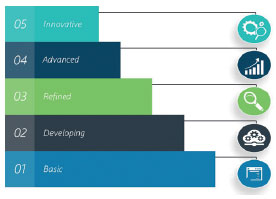THANK YOU FOR SUBSCRIBING
Editor's Pick (1 - 4 of 8)

Construction Productivity has been Stuck for Decades
Connor Butler, Managing Principal, Relevate Lean Construction Consulting


Connor Butler, Managing Principal, Relevate Lean Construction Consulting
One of the biggest issues facing the construction industry today is a worker shortage
 Barriers to Technology Adoption
With such a big opportunity available as well as existing technology frameworks that have been applied in other industries, the question becomes why isn’t this fixed?
One reason is the uniqueness and fragmentation of the industry. Every construction project is different. Every budget and schedule is different. Each owner has unique business objectives. Every builder and contractor has different business models and strategies. In addition, different owner requirements can get in the way of construction companies making large IT investments. The biggest issue preventing a technology led revolution in construction productivity is a lack of data standards. Even when technology is applied on construction projects today, a vast majority of the data transferred is still in the form of individual and unique attachments, usually .pdf but also .doc and .xls.
Another reason this hasn’t been solved is the size of the construction supply chain. A $400M construction project will routinely have 4,000 different suppliers. Coupling a lack of standardization with the size and diversity of the supply chain manifests ad hoc systems. Without a way to share data in a common platform, we should expect the same performance, or lack thereof, and the inefficiencies obtained with non-integrating platforms.
The solution to this problem lies in standardizing data and how it is transferred. Until this happens, information will continue to be passed in “technology” platforms via attachments and project teams will focus their time on ad hoc data integration rather than maximizing value added activities.
Industry Steps towards Standardization
Several shifts are underway to improve this. The Construction Industry Institute (CII) has started an effort that it is branding as “Operating System 2.0” with the goal of developing a universal data standard that should allow integration of many of today’s standalone technology solutions. Several other organizations are also driving data standardization such as the Data Exchange Within the Process Industry (DEXPI.org) and the BIM Service Interface Exchange (BIMSie) championed by the Building Smart Alliance. There is an ISO standard for Building Information Modeling data (ISO 15926). Several leading construction technology companies are pushing their own standardization initiatives. While this may seem trivial, there has been a huge increase in the ability to exchange data across different CAD platforms in the last five years.
See Also:
Top Construction Technology Companies
Barriers to Technology Adoption
With such a big opportunity available as well as existing technology frameworks that have been applied in other industries, the question becomes why isn’t this fixed?
One reason is the uniqueness and fragmentation of the industry. Every construction project is different. Every budget and schedule is different. Each owner has unique business objectives. Every builder and contractor has different business models and strategies. In addition, different owner requirements can get in the way of construction companies making large IT investments. The biggest issue preventing a technology led revolution in construction productivity is a lack of data standards. Even when technology is applied on construction projects today, a vast majority of the data transferred is still in the form of individual and unique attachments, usually .pdf but also .doc and .xls.
Another reason this hasn’t been solved is the size of the construction supply chain. A $400M construction project will routinely have 4,000 different suppliers. Coupling a lack of standardization with the size and diversity of the supply chain manifests ad hoc systems. Without a way to share data in a common platform, we should expect the same performance, or lack thereof, and the inefficiencies obtained with non-integrating platforms.
The solution to this problem lies in standardizing data and how it is transferred. Until this happens, information will continue to be passed in “technology” platforms via attachments and project teams will focus their time on ad hoc data integration rather than maximizing value added activities.
Industry Steps towards Standardization
Several shifts are underway to improve this. The Construction Industry Institute (CII) has started an effort that it is branding as “Operating System 2.0” with the goal of developing a universal data standard that should allow integration of many of today’s standalone technology solutions. Several other organizations are also driving data standardization such as the Data Exchange Within the Process Industry (DEXPI.org) and the BIM Service Interface Exchange (BIMSie) championed by the Building Smart Alliance. There is an ISO standard for Building Information Modeling data (ISO 15926). Several leading construction technology companies are pushing their own standardization initiatives. While this may seem trivial, there has been a huge increase in the ability to exchange data across different CAD platforms in the last five years.
See Also:
Top Construction Technology Companies
Weekly Brief
I agree We use cookies on this website to enhance your user experience. By clicking any link on this page you are giving your consent for us to set cookies. More info
Read Also













